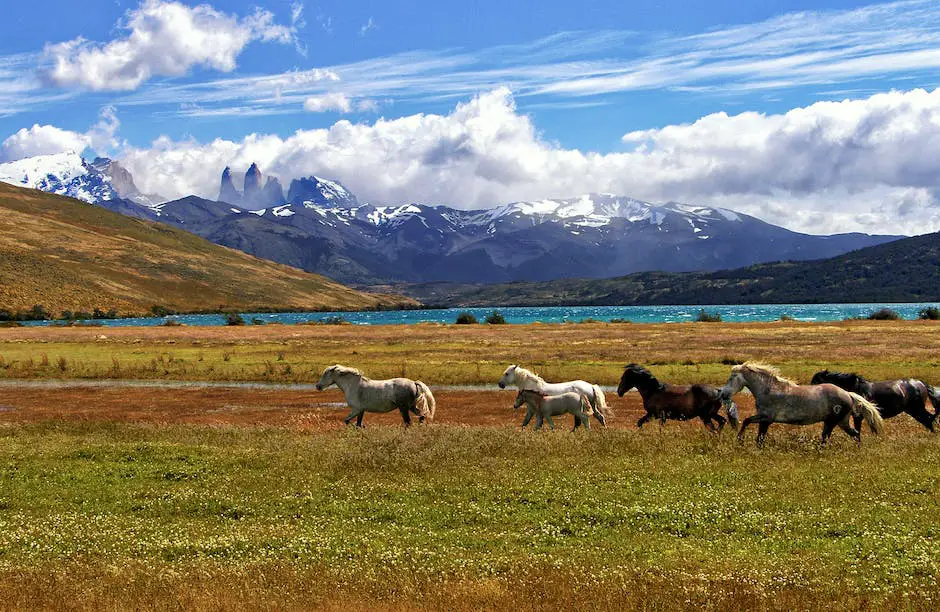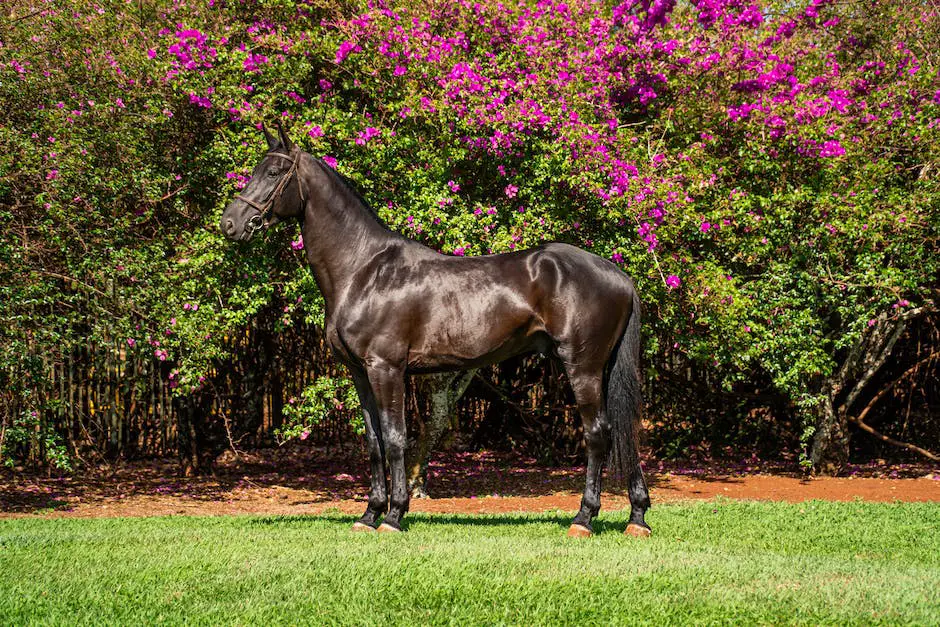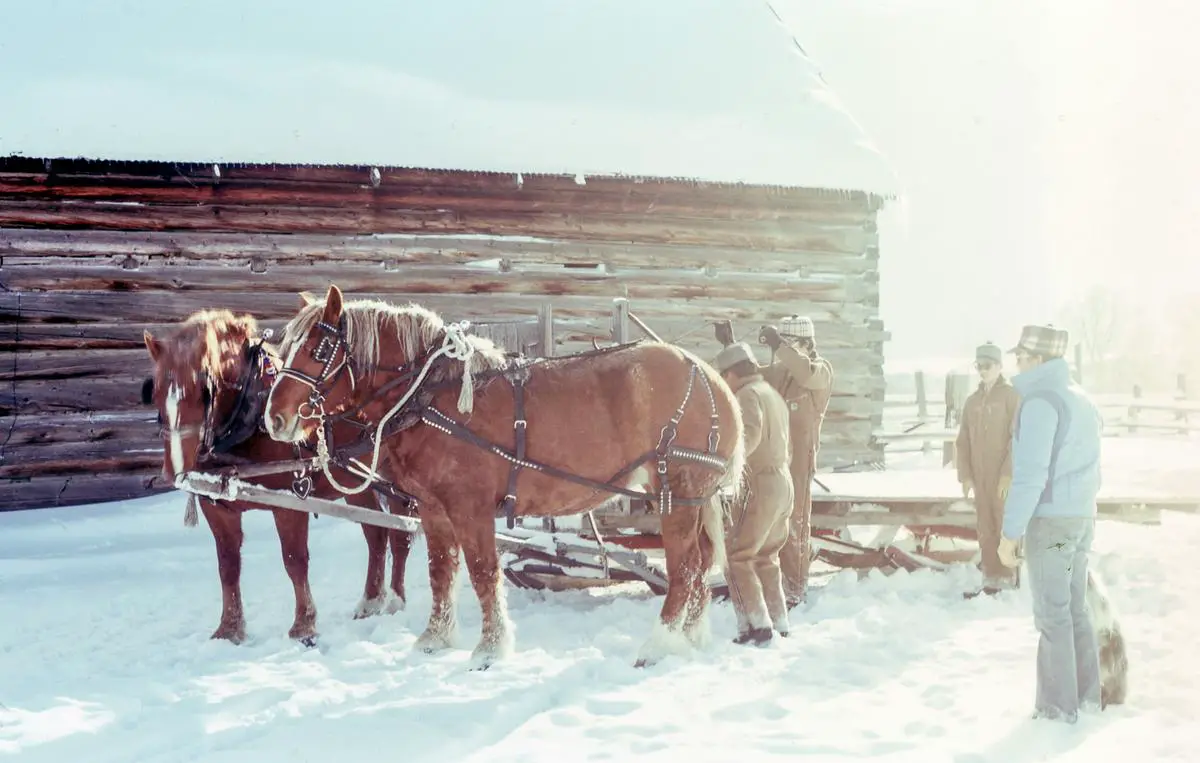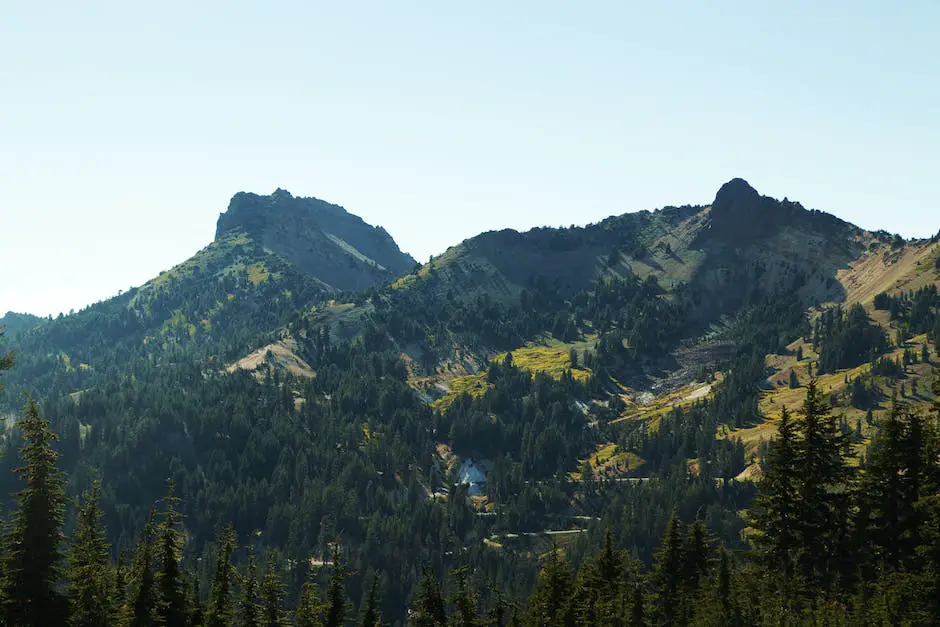Steeped in history and boasting a heritage that weaves through the tapestry of French equestrian culture, the Calvados horse is more than just a breed; it is a living symbol of the Normandy region’s spirit and tradition. These horses, known for their strength, beauty, and versatility, carry with them a story that begins in the lush countryside of northern France. With an ancestry shrouded in the mists of time and a reputation solidified by centuries of careful breeding, the tale of the Calvados horse is as rich and complex as the apple brandy that shares its name. As we embark on an exploration of the Calvados horse’s past, present, and future, we uncover the essence of a breed that has triumphed in both competitive arenas and labor fields alike, all the while maintaining the gentle demeanor that endears them to enthusiasts worldwide.
Table of Contents (Horspedia)
History and Origin of Calvados Horses
The Origin Tale of the Majestic Calvados Horses
Are you ready for a gallop into the past to uncover the roots of the magnificent Calvados horses? These equine beauties have trotted their way into the hearts of horse lovers worldwide, and for good reason! With their muscular build, spirited demeanor, and sheer elegance, it’s no wonder they’ve become a favorite amongst hobbyists and professional riders alike. So, let’s hop onto the saddle of history and ride through the origins of these noble creatures.
First things first, let’s take a quick journey to Normandy, France. This picturesque region, known for its lush orchards and rich culinary traditions, is the cradle of the Calvados horse breed. But hold your horses! While we call them Calvados today, back in the day, they weren’t known by this name. Actually, this breed is most often referred to as the Normandy horse. The Calvados name merely nods to the horses’ strong association with the Calvados department within Normandy, and that’s where lots of them thrived.
Now, imagine the Norman countrysides in the Middle Ages. Back then, this breed was already trotting around, helping humans with all sorts of tasks. These horses were not just for show – they were genuine workhorses, pulling plows, carrying knights in armor, and whatever else folks needed. Their stamina and strength made them super reliable, and their calm yet courageous temperament was perfect for the unpredictable Medieval lifestyle.
But wait, there’s more! The Calvados horses we admire today didn’t just pop out of thin air; they were bred with purpose. Local farmers in Normandy smartly mixed their sturdy native stock with Arabian and Thoroughbred horses, giving us the incredible mix of power and grace that defines the Calvados breed. Think of it as a recipe for equine excellence: a pinch of speed, a dash of endurance, and a whole lot of character!
These horses were so impressive that they caught the eye of many throughout history, including royalties and armies. In fact, the Calvados’s ancestors played a big part during the Hundred Years’ War, proving their worth on the battlefield with their unyielding spirit and resilience. Talk about a horse with a history!
But what about modern times? Well, the Calvados horse has jumped the fence from historical hard-worker to modern marvel. While they’re still handy for farm work or a leisurely trot through the countryside, these horses shine in competition too. Thanks to their versatility, they’re stars in dressage, show jumping, and eventing. It goes to show that a horse born from the windswept pastures of Normandy can rise to any occasion, whether it’s tackling a rugged trail or leaping over hurdles in an arena.
So, whether you’re a history buff, an aspiring equestrian, or just someone who appreciates animals with an amazing backstory, the Calvados horses are a breed that won’t disappoint. They remind us that sometimes, the most extraordinary things come from humble beginnings, only to mature into something nothing short of magnificent. Isn’t it fascinating how time, careful breeding, and a little bit of history can shape such incredible animals?

Characteristics and Temperament
When spotting a Calvados horse, it’s not just their history that’ll catch your attention; their stunning looks and remarkable personalities are real showstoppers.
Firstly, let’s talk appearance. These equine beauties often have a bay, chestnut, or roan coat, shining like polished copper in the sun. Some stand out with bold markings – like a blaze on the nose or socks on their legs – that add to their charm.
Their heads are a mix of noble and sturdy, a tribute to their mixed lineage, with eyes that seem to sparkle with a sort of horse wisdom. Moving past their expressive faces, you’ll notice that Calvados horses have solid and compact bodies, a trait that screams strength and endurance. These horses aren’t giants, but they’re not ponies either; they strike that perfect balance of size that makes them versatile for riders and workers alike.
Don’t forget those muscles! Every inch of a Calvados horse is toned, a result of generations bred for power. But despite their brawny look, they move with an elegance that’s hard to miss. Whether they’re galloping across a field or trotting in a show ring, they do it with a grace that makes it seem like they’re floating.
Now, let’s chat personality because Calvados horses aren’t just pretty faces; they’ve got character in spades. It’s like they know their worth – a blend of intelligence and level-headedness that makes them a joy to work with. They’re cooperative and eager to please, making training sessions less of a chore and more of a joint adventure. Need a buddy for a calm trail ride? They’re up for it. Looking for a teammate for competition? They’ve got your back.
But it’s not just their versatility that makes them standouts; it’s their spirit. Calvados horses seem to have inherited a sense of loyalty and patience from their ancestors. This means they can be trusted with kids and beginners, showing a gentleness that’s heartwarming. Yet, place them with an expert, and they’ll rise to the challenge, proving that their kind nature doesn’t mean they lack in spirit or determination.
Ultimately, what makes Calvados horses special isn’t just one thing. It’s the blend of their looks – those coats and muscles, and their soulful eyes – with the essence of who they are: smart, adaptable, strong yet gentle creatures. They’re living legacies, carrying the stories of their past into every arena and farm they grace with their presence.

Training and Care
Training and Care of the Calvados Horse: A Guide to Maximizing Potential and Maintaining Health
The beauty and versatility of the Calvados horse make it a favorite among equestrian enthusiasts. Known for its cooperative nature and eagerness to learn, the Calvados is a breed that requires a strategic approach to training and care. Using the proper techniques, one can cultivate these equine treasures into top performers while maintaining their happiness and health.
When training a Calvados horse, patience and consistency are key. Given their intelligent and willing demeanor, they respond best to a gentle hand and positive reinforcement. Begin with basic groundwork to establish trust and respect between the horse and trainer. This foundation is essential for all future training. Utilize a variety of exercises to keep the horse engaged and prevent boredom, as their smart minds thrive on diversity.
Consistent exercise is crucial for keeping the Calvados horse in prime condition. Because of their history as workhorses, they possess significant stamina and strength, necessitating daily activity. However, the exercise should be balanced – combining light workouts with more rigorous training will optimize performance without causing undue strain.
Diet and nutrition are equally important in the care of a Calvados horse. They require a balanced intake of hay, grains, and pasture to fuel their robust bodies and active minds. Monitoring weight and adjusting feed accordingly is essential, ensuring the horse maintains optimal body condition without becoming overweight.
One cannot overlook the importance of routine veterinary checks and farrier visits. Like all horses, the Calvados benefits immensely from regular health care, including vaccinations, dental check-ups, and hoof care. With their muscular build, it’s crucial to avoid hoof problems that could lead to lameness, discomfort, or worse.
Socializing Calvados horses is another aspect of care that bolsters their mental and emotional well-being. They are social creatures by nature and enjoy the company of both humans and other horses. Allotting time for interaction and bonding can prevent stress and loneliness, which might otherwise manifest as behavioral issues.
Overall, through respectful training, balanced exercise, proper nutrition, and regular health care, one can ensure the Calvados horse leads a healthy, happy, and productive life. Their work ethic makes them eager to please, and when handled with care, they are primed to become outstanding companions in all equestrian endeavors. Remember, a well-cared-for Calvados horse is not only a majestic sight to behold but also a friend for life and a living legacy of history and equine excellence.

Calvados Horses in Competition and Work
Calvados horses have made quite a name for themselves beyond the picturesque fields of Normandy. Nowadays, these majestic beasts, with their intelligence and versatile abilities, excel in the professional world. Whether it’s in show jumping, dressage, or even therapeutic riding, Calvados horses are impressive performers.
Take show jumping, for example. Because of their muscular build and powerful legs, Calvados can make precise and agile jumps. They show a lot of courage, which is essential in navigating tricky courses, and their history as workhorses contributes to their endurance and resilience in the ring.
In dressage, the Calvados horses’ elegant movements are a standout feature. They move with such grace and finesse, making them naturals for this disciplined art. Their ability to work collaboratively with a rider allows them to master complex routines and shine in competitions.
Therapeutic riding is another area where these horses truly excel. Their calm and gentle nature provides a sense of security for riders with special needs. The loyalty and trust-building traits of a Calvados make them ideal companions for therapeutic horsemanship programs.
Eventing is a demanding sport that requires a horse with a diverse skill set. Calvados horses happily rise to this challenge, showing just how adaptable and well-rounded they truly are. The diverse training they receive from a young age allows them to tackle the different phases of eventing with enthusiasm.
When it comes to carriage driving, those early days of pulling carts in medieval Normandy certainly weren’t in vain. The same strength and steady temperament make the Calvados a top choice for those passionate about driving competitions.
Not to overlook the fact that many professional stables also prize these horses for their breeding potential. The enriched bloodlines of the Calvados make them desirable for producing strong, multi-talented offspring.
In all, the professional accolades of Calvados horses are a testament to their outstanding heritage and the thoughtful care they receive. They’re not just beautiful animals—they’re partners, athletes, and companions, capable of achieving remarkable things in the hands of those who appreciate and nurture their many talents.

Photo by lesanderson on Unsplash
Preservation Efforts and Current Status
Preservation Efforts for the Calvados Horse Breed
Journey to the rich meadows of Normandy, and the presence of a majestic breed—the Calvados horse—will surely capture one’s attention. Protecting and preserving this exquisite breed has become a central focus for many enthusiasts and breeders who understand their value beyond aesthetics.
When it comes to ensuring their lineage thrives, one of the first steps is the establishment of stud books and breeding programs. Organizations dedicated to the Calvados horse breed vigilantly record bloodlines, parentage, and offspring to make informed breeding decisions. Choosing mates with care prevents inbreeding and helps strengthen the breed’s genetic diversity.
Another cornerstone of preservation is the involvement of local authorities and equine enthusiasts who promote the Calvados horse through festivals and shows happening in Normandy. Such public displays increase awareness and encourage new generations to take up the mantle of caretakers for this noble breed.
Preservation is also backed by financial incentives from both government and private sectors. Grants and subsidies are sometimes made available to breeders who prioritize the maintenance of the breed’s purity and well-being. This financial support can be crucial for smaller operations that are dedicated to keeping traditional breeding methods alive.
At the grassroots level, riding schools, and equestrian clubs often take pride in featuring Calvados horses in their programs. Through regular riding lessons, trail excursions, and competitive events, these institutions contribute to sustaining the breed’s populace and ensuring their traits remain relevant in a modern context.
It is also critical to educate the public on the role of the Calvados horse in both history and present day. Knowledge sharing on their capabilities, temperament and maintenance creates a well-informed community that can act as guardians for these horses. Workshops, brochures, and web content are just some of the tools utilized to spread this vital information.
Finally, to maintain the breed’s distinguished traits, breeders and caretakers often engage in selective breeding practices. This is done with respect to their athleticism, temperament, and historical lineage. They aim to uphold the essence of the Calvados horse while aligning with contemporary needs and standards.
In conclusion, the effort to preserve the Calvados horse breed is multifaceted, involving careful genetic management, public advocacy, financial support, hands-on education, and selective breeding. Through thoughtful stewardship, these equine treasures continue to grace French landscapes and beyond, as beloved companions, competitors, and living symbols of cultural heritage.

The Calvados horse today stands as a testament to the enduring legacy of equine excellence in Normandy, a beacon for breeders, riders, and admirers who seek to uphold the standards and traditions established over generations. They remain a source of regional pride and an emblem of horse showing par excellence, with a confluence of grace and utility that continues to capture hearts. As we close this chapter on one of France’s equine treasures, it is evident that the passion for the Calvados horse is as robust as ever, fueled by the collective commitment to preserving its lineage and ensuring that future generations can appreciate and utilize this magnificent breed. With every canter and trot, Calvados horses are not just living out their legacy; they are inviting us to become a part of their storied journey—an invitation that echoes through the history-laden stables and into the hearts of horse lovers everywhere.
